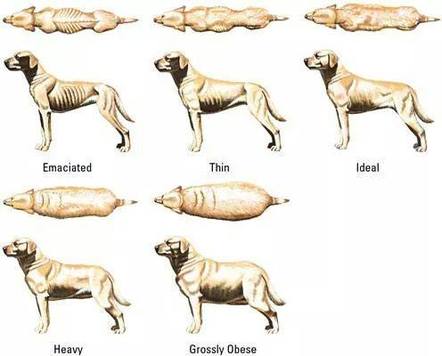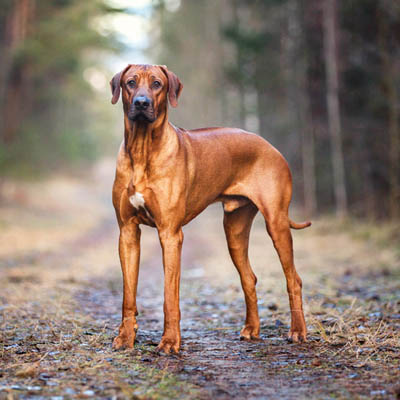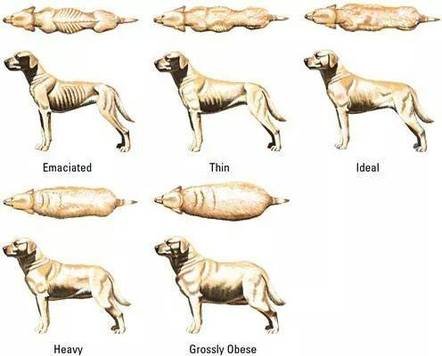Hey there, future dog owners! If you’re wondering how much to feed your adorable Rhodesian Ridgeback puppy, you’re in the right place. Figuring out the perfect portion size for your furry friend is essential for their health and happiness.
So, how much should a Rhodesian Ridgeback puppy eat? Well, their nutritional needs vary depending on their age, size, and activity level. As a general guideline, puppies should be fed around three to four meals a day to support their rapid growth and energy requirements.
Finding the right balance can be a bit of a puzzle, but don’t worry—I’m here to guide you through it. By the end of this article, you’ll be equipped with all the info you need to keep your Rhodesian Ridgeback puppy content and well-fed. Let’s dive in and discover the feeding secrets for these charming canines!

How Much Should a Rhodesian Ridgeback Puppy Eat?
Rhodesian Ridgebacks are active, energetic dogs known for their muscular build and distinctive ridge of hair along their backs. As puppies, they require proper nutrition to support their growth and development. In this article, we will explore how much a Rhodesian Ridgeback puppy should eat, including the appropriate portion sizes and feeding schedule. By understanding their dietary needs, you can ensure your puppy receives the right amount of food for a healthy and happy start in life.
Factors Affecting a Rhodesian Ridgeback Puppy’s Food Consumption
Before we dive into specific portion sizes and feeding schedules, it’s essential to consider the factors that can influence how much a Rhodesian Ridgeback puppy should eat. These factors include:
1. Age and Growth Stage:
The age and growth stage of your Rhodesian Ridgeback puppy play a significant role in determining their food consumption. Puppies have different nutritional needs than adult dogs, and their meals should be tailored to support their growth and development. As they age, their dietary requirements change, and adjustments to portion sizes and feeding frequency may be necessary.
2. Weight and Size:
The weight and size of your Rhodesian Ridgeback puppy are important considerations when determining their food intake. Larger puppies generally require more food than smaller ones. It’s crucial to weigh your puppy regularly and consult with a veterinarian to ensure they are maintaining a healthy weight and receiving the appropriate amount of nourishment.
3. Activity Level:
Rhodesian Ridgebacks are known for their high energy levels and active nature. If your puppy is particularly active or involved in activities such as training or agility, they may require more food to fuel their energy needs. On the other hand, if your puppy is relatively sedentary, they may require fewer calories to maintain a healthy weight.
Portion Sizes and Feeding Schedule for Rhodesian Ridgeback Puppies
Now that we have discussed the factors influencing a Rhodesian Ridgeback puppy’s food consumption, let’s delve into portion sizes and feeding schedules. Keep in mind that the following guidelines are general recommendations, and it’s important to consult with your veterinarian for personalized advice based on your puppy’s specific needs.
1. Determine the Appropriate Caloric Intake:
The first step in determining how much your Rhodesian Ridgeback puppy should eat is to calculate their daily caloric intake. The caloric needs of puppies vary depending on their age, weight, and activity level. As a rough estimate, a healthy Rhodesian Ridgeback puppy should consume around 55 to 65 calories per pound of body weight per day. However, individual requirements may vary.
2. Divide the Daily Caloric Intake Into Meals:
Once you have determined the daily caloric intake for your Rhodesian Ridgeback puppy, you can divide it into several meals throughout the day. It’s best to feed puppies three to four small meals rather than one or two large meals. This helps prevent bloating and keeps their energy levels consistent.
3. Monitor Your Puppy’s Weight and Adjust Accordingly:
Regularly monitor your Rhodesian Ridgeback puppy’s weight and body condition. If they are gaining too much weight, you may need to adjust the portion sizes accordingly. On the other hand, if they are not gaining weight or seem undernourished, you may need to increase the amount of food they receive. Always consult with your veterinarian before making any significant changes to your puppy’s diet.
Tips for Feeding Your Rhodesian Ridgeback Puppy
Feeding a Rhodesian Ridgeback puppy goes beyond portion sizes and feeding schedules. Here are some additional tips to ensure your puppy stays healthy and happy:
1. Choose High-Quality Puppy Food:
Opt for a high-quality puppy food that is specifically formulated for large breed puppies. These foods contain the right balance of nutrients to support your Rhodesian Ridgeback puppy’s growth and development. Look for a food that lists meat as the first ingredient and does not contain any artificial fillers or unnecessary additives.
2. Provide Fresh Water at All Times:
Make sure your Rhodesian Ridgeback puppy has access to fresh, clean water at all times. Hydration is essential for their overall health and wellbeing.
3. Avoid Overfeeding:
Resist the temptation to overfeed your Rhodesian Ridgeback puppy. Overfeeding can lead to obesity and associated health issues. Stick to the recommended portion sizes and adjust as necessary based on your puppy’s weight and condition.
4. Monitor for Allergies or Sensitivities:
Some Rhodesian Ridgeback puppies may have food allergies or sensitivities. Monitor your puppy for any signs of digestive upset, itching, or other symptoms that could indicate a food intolerance. If you suspect an issue, consult with your veterinarian to determine the best course of action.
Finding the Right Balance
Feeding a Rhodesian Ridgeback puppy involves finding the right balance between providing enough nutrition to support their growth and avoiding overfeeding. By considering factors such as age, weight, and activity level, you can determine the appropriate portion sizes and feeding schedule. Regular monitoring and communication with your veterinarian are essential to ensure your puppy receives the nourishment they need for a healthy and happy life.
Conclusion
Feeding a Rhodesian Ridgeback puppy can be a rewarding experience when done with knowledge and care. By understanding your puppy’s specific needs and making appropriate adjustments, you can ensure they receive the right amount of food for optimal growth and development. Remember to consult with your veterinarian for personalized guidance and to monitor your puppy’s weight and condition regularly. With a balanced and nutritious diet, your Rhodesian Ridgeback puppy will thrive and become a happy and healthy adult dog.
Key Takeaways: How Much Should a Rhodesian Ridgeback Puppy Eat
- A Rhodesian Ridgeback puppy requires a specific feeding schedule and portion control to support healthy growth.
- Consult with a veterinarian to determine the appropriate amount of food based on your puppy’s age, weight, and activity level.
- Rhodesian Ridgebacks are prone to obesity, so it’s important not to overfeed them.
- Divide the daily recommended food amount into multiple meals to prevent digestive issues.
- Feed your puppy a high-quality, balanced diet specifically formulated for large breed puppies.
Frequently Asked Questions
Welcome to our frequently asked questions section about feeding Rhodesian Ridgeback puppies. Below, we have answered some common queries that owners have regarding their puppy’s diet and nutrition.
1. How often should I feed my Rhodesian Ridgeback puppy?
For Rhodesian Ridgeback puppies, it is recommended to feed them three meals a day until they are about six months old. This helps provide them with the necessary nutrients and energy they need for their rapid growth and development. After six months, you can transition to feeding them twice a day.
Keep in mind that every puppy is unique, and individual feeding requirements may vary. It’s essential to monitor their weight and adjust the portion sizes if needed. Consult with your veterinarian for specific guidelines based on your puppy’s age, weight, and activity level.
2. How much food should I give my Rhodesian Ridgeback puppy at each meal?
The amount of food you should give your Rhodesian Ridgeback puppy at each meal depends on their age, weight, and activity level. Generally, it is recommended to follow the feeding guidelines provided by the manufacturer of your chosen puppy food. These guidelines often provide a recommended amount based on your puppy’s weight.
As a general rule of thumb, you can divide your puppy’s daily recommended intake into the number of meals they have. For example, if your puppy needs to eat 2 cups of food per day and you feed them three times a day, you can give them around 2/3 cup of food at each meal. It’s important to monitor your puppy’s weight regularly and make adjustments as needed to ensure they are growing at a healthy rate.
3. Should I free-feed my Rhodesian Ridgeback puppy?
Free-feeding, where food is available to the puppy at all times, is not recommended for Rhodesian Ridgeback puppies. These puppies can have a tendency to overeat, which can lead to obesity and other health issues. It’s important to establish a regular feeding schedule and portion out their meals accordingly.
By feeding your puppy at set times, you can monitor their intake and ensure they are receiving a balanced diet. It also helps with potty training, as you can predict when they will need to go outside after eating. Remember to remove any uneaten food after a designated amount of time to prevent spoilage and bacterial growth.
4. Can I give my Rhodesian Ridgeback puppy treats?
Yes, you can give your Rhodesian Ridgeback puppy treats, but it’s important to do so in moderation. Treats should not make up a significant portion of their daily caloric intake, as it could lead to an imbalance in their nutrition and weight gain. Opt for healthy, puppy-specific treats that are low in calories and made from quality ingredients.
Treats can be used for training purposes or as occasional rewards, but they should not replace their regular meals. Always ensure that treats are an addition to a balanced diet, and consult with your veterinarian if you have any concerns about specific treats or their impact on your puppy’s health.
5. What should I do if my Rhodesian Ridgeback puppy is not eating?
If your Rhodesian Ridgeback puppy is not eating or has a decreased appetite, it’s essential to monitor their behavior and contact your veterinarian if it persists. There can be various reasons why a puppy may not be eating, such as illness, dental issues, or stress.
Ensure that your puppy’s food is fresh, and try feeding them in a quiet and comfortable environment. Sometimes, picky eating is temporary, and puppies may lose interest in their food if they are getting too many treats or table scraps. However, if the lack of appetite continues, it’s important to consult with a veterinarian to rule out any potential health concerns or underlying issues.

Summary
Rhodesian Ridgeback puppies should eat a balanced diet that includes high-quality puppy food.
Keep in mind their age, weight, and activity level when determining portion sizes.
It’s important to establish a regular feeding schedule and avoid overfeeding to prevent obesity.
Remember to consult with a veterinarian for personalized feeding recommendations and guidance on your puppy’s specific nutritional needs.
